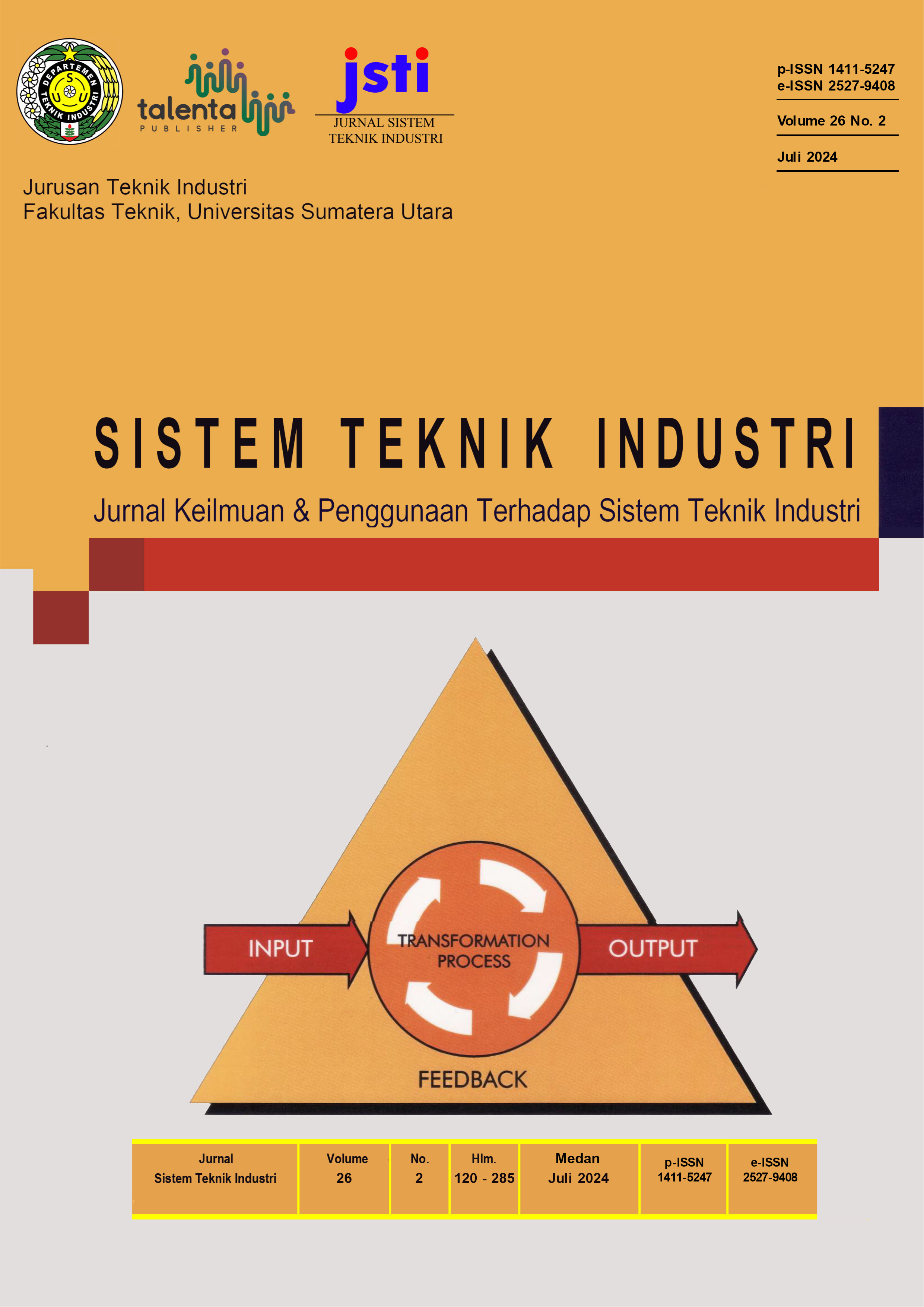Implementing Human-Centric Design in Developing a Multifunctional Chair and Storage Solution for Children
DOI:
https://doi.org/10.32734/jsti.v26i2.15362Keywords:
Human Centric Design, Multifunctional Children Product, Product DesignAbstract
This research applies Human-Centric Design (HCD) principles to develop a multifunctional storage solution integrated with a chair, specifically designed for children. By considering the needs and preferences of both parents and young users, we combine ergonomic design elements with practical storage functionality. The resulting product not only organizes children’s belongings for parents but also provides an enjoyable experience for kids. Our study contributes to a deeper understanding of how HCD can effectively create functional and appealing products for parents and child users.
Downloads
References
A. R. Lyon, S. K. Brewer, and P. A. Areán, “Leveraging human-centered design to implement modern psychological science: Return on an early investment.,†American Psychologist, vol. 75, no. 8, pp. 1067–1079, Nov. 2020, doi: 10.1037/amp0000652.
N. S. Abdelaziz Mahmoud, G. El Samanoudy, and C. Jung, “Simulating the natural lighting for a physical and mental Well-being in residential building in Dubai, UAE,†Ain Shams Engineering Journal, vol. 14, no. 1, p. 101810, Feb. 2023, doi: 10.1016/j.asej.2022.101810.
L. Dai and B. Xu, “Research on the Furniture Design Criteria for Children’s Psychological Development in Home Environment,†in Lecture Notes in Computer Science (including subseries Lecture Notes in Artificial Intelligence and Lecture Notes in Bioinformatics), Springer Verlag, 2019, pp. 277–286. doi: 10.1007/978-3-030-23538-3_21.
F. Lang, V. Pues, A. Schmidt, and T. K. MacHulla, “BrailleBuddy: A Tangible User Interface to Support Children with Visual Impairment in Learning Braille,†in Conference on Human Factors in Computing Systems - Proceedings, Association for Computing Machinery, Apr. 2023. doi: 10.1145/3544548.3580844.
Karan Jain, Ruchi Gaur, and Sunakshi Shokeen, “Interior Design Patterns and Sustainable Housing Solutions: Insights from a Slum Community in North-West Delhi, India,†International Research Journal on Advanced Engineering and Management (IRJAEM), vol. 2, no. 04, pp. 747–765, Apr. 2024, doi: 10.47392/IRJAEM.2024.0104.
B. Pioppi, I. Pigliautile, C. Piselli, and A. L. Pisello, “Cultural heritage microclimate change: Human-centric approach to experimentally investigate intra-urban overheating and numerically assess foreseen future scenarios impact,†Science of The Total Environment, vol. 703, p. 134448, Feb. 2020, doi: 10.1016/j.scitotenv.2019.134448.
A. Shaw, “Designing the birthing experience for low resource settings. A human centered design approach,†2017. [Online]. Available: https://api.semanticscholar.org/CorpusID:115422238
Q. Zhu and J. Luo, “TOWARD ARTIFICIAL EMPATHY FOR HUMAN-CENTERED DESIGN: A FRAMEWORK A PREPRINT,†2023.
S. Zhang, C. Xu, and Y. Chen, “Human-centered Design Investigation and Development of Chinese Young women’s Daily mobility Safety,†in Human-Centered Design and User Experience, AHFE International, 2023. doi: 10.54941/ahfe1004231.
F. Pineda Bravo, P. Gonzalez Perez, and W. Perez Garcia, “A Process Mining Approach for Studying Traveller’s Behaviour in Cuba by Means of Customer Journey Analysis,†American Journal of Theoretical and Applied Business, vol. 7, no. 4, p. 81, 2021, doi: 10.11648/j.ajtab.20210704.12.
R. Edwards and J. Holland, What is qualitative interviewing? 2013.
M. Fiadotau and M. Sillaots, “Comparing Ideation Techniques for Games Education: SCAMPER, Gamicards, Brainstorming,†in ACM International Conference Proceeding Series, Association for Computing Machinery, Aug. 2020, pp. 22–25. doi: 10.1145/3409456.3409460.
A. Følstad and K. Kvale, “Customer journeys: a systematic literature review,†Journal of Service Theory and Practice, vol. 28, no. 2. Emerald Group Holdings Ltd., pp. 196–227, Mar. 06, 2018. doi: 10.1108/JSTP-11-2014-0261.
B. Camburn et al., “Design prototyping methods: State of the art in strategies, techniques, and guidelines,†Design Science, vol. 3, 2017, doi: 10.1017/dsj.2017.10.
S. Eng, “Agile Working.â€
M. B. Adam, J. Minyenya-Njuguna, W. Karuri Kamiru, S. Mbugua, N. W. Makobu, and A. J. Donelson, “Implementation research and human-centred design: how theory driven human-centred design can sustain trust in complex health systems, support measurement and drive sustained community health volunteer engagement,†Health Policy Plan, vol. 35, no. Supplement_2, pp. ii150–ii162, Nov. 2020, doi: 10.1093/heapol/czaa129.
J. Vanus et al., “Monitoring of the daily living activities in smart home care,†Human-centric Computing and Information Sciences, vol. 7, no. 1, Dec. 2017, doi: 10.1186/s13673-017-0113-6.
A. Brischetto, G. Lotti, and F. Tosi, “Ergonomics in Design: The Human-Centred Design Approach for Developing Innovative Motor Caravans Systems,†2019, pp. 1066–1080. doi: 10.1007/978-3-319-96071-5_109.
Downloads
Published
How to Cite
Issue
Section
License
Copyright (c) 2024 TALENTA Publisher Universitas Sumatera Utara

This work is licensed under a Creative Commons Attribution-ShareAlike 4.0 International License.
The Authors submitting a manuscript do so on the understanding that if accepted for publication, the copyright of the article shall be assigned to TALENTA Publisher Universitas Sumatera Utara as the publisher of the journal.
Copyright encompasses the rights to reproduce and deliver the article in all forms and media. The reproduction of any part of this journal, its storage in databases, and its transmission by any form or medium will be allowed.



















